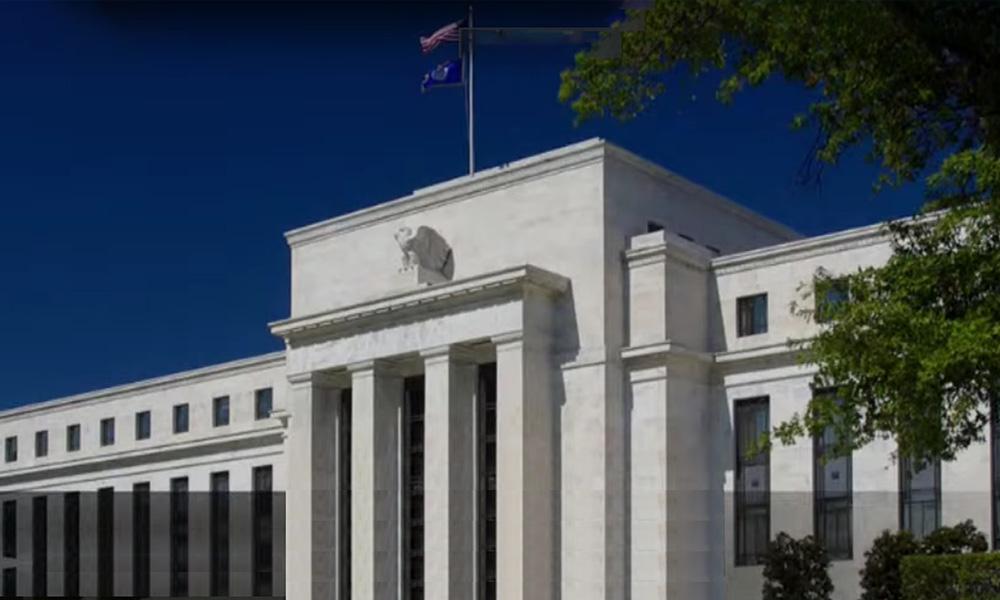Trump's pressure is fruitless, Powell sticks to the bottom line: Where will the Fed's interest rate cut go?
2025-07-02 08:58:22

Waiting cautiously: Powell emphasizes data-driven decision-making
At the Central Bank Forum in Sintra, Powell made it clear that the Fed will remain cautious in formulating monetary policy and wait for more economic data to assess the potential impact of policies such as tariffs on inflation. He mentioned: "We just need some time to see what these possible effects are." This position is a direct response to Trump's recent open letter. In the letter, Trump criticized the Fed for its slow action and pointed out that other major central banks have significantly reduced interest rates, suggesting that the United States should follow quickly. However, Powell insisted that the US economy is currently performing well, growth and labor markets are both strong, and unemployment is at a historically low level, so there is no need to rush to take drastic interest rate cuts.
Powell specifically pointed out that the uncertainty of tariff policy has significantly pushed up inflation expectations, which is also the main reason why the Fed has suspended interest rate cuts since December last year. In September 2024, the Fed launched a rate cut cycle, reducing interest rates by 100 basis points in total, lowering the benchmark interest rate to a range of 4.25%-4.5%. However, due to the significant upward revision of inflation forecasts caused by tariff policies, the Fed chose to stay put for the time being to further observe economic trends. Powell emphasized that the Fed's decisions will be based entirely on data, not external pressure, which reflects its firm commitment to policy independence.
July rate cut suspense: market sentiment heats up
Although Powell emphasized prudence, he did not completely close the possibility of a rate cut at the July 29-30 meeting in his speech. He said: "I will not rule out the possibility of taking action at any meeting, nor will I directly commit to taking action at a certain meeting. It will depend on how the data evolves." This statement immediately sparked heated discussions in the market, and investors' expectations for a rate cut in July slightly increased. Previously, the market assessed the probability of a rate cut in July at about one-quarter, but after the latest job vacancy data was stronger than expected, the probability of a rate cut fell back to nearly one-fifth.
Investors are now turning their attention to the upcoming June employment report and June inflation data in two weeks. These key data will provide the Fed with more clues to help it determine whether it needs to adjust monetary policy. Powell pointed out that Fed officials generally expect to lower interest rates later this year, but the specific timing depends on whether inflation rises as expected and whether there are signs of weakness in the job market. At present, the US economy has not shown signs of being in trouble due to overly tight monetary policy, which provides the Fed with more room for observation and decision-making.
The Dilemma Between Inflation and Employment
The Fed is currently facing a complex economic environment, and the possibility of rising inflation and unemployment at the same time makes decision-making particularly difficult. As a central bank with the dual mission of price stability and maximizing employment, the Fed needs to find a balance between conflicting data. Powell admitted that tariff policies have a significant impact on inflation, and the uncertainty of trade policies has also put companies on the sidelines, increasing the complexity of economic operations.
Despite this, Powell is optimistic about the overall performance of the U.S. economy. He said: "Economic growth has been solid, the labor market is solid, and unemployment remains at a historically low level. This does not feel like an economy that is struggling due to tight monetary policy." This judgment shows that the Fed believes that the current economy is still resilient and there is no need to rush to take drastic easing measures in the short term. However, if inflation continues to exceed expectations or the job market shows obvious weakness, the Fed may be forced to accelerate the pace of interest rate cuts.
Fed independence is tested again: Powell speaks out
In his speech, Powell also responded to a series of criticisms from Trump on his policy decisions. Trump has repeatedly publicly criticized the Fed, accusing it of being too slow to cut interest rates and suggesting that the Fed's actions were politically motivated. In the face of these pressures, Powell reiterated at the Sintra Forum that the Fed is "100%" focused on inflation and employment goals, and is not distracted by political factors. This statement won applause from the audience and was also praised by other central bank governors such as the European Central Bank and the Bank of England.
Powell further emphasized that the Fed's mission is to achieve macroeconomic stability for all Americans, and the key to achieving this goal is to maintain policy independence. He said that no matter who will take over his position as chairman in the future, the Fed will formulate policies in a neutral and objective manner without favoring any party. This firm defense of independence is not only a response to Trump's criticism, but also provides a clear position for the Fed's operations in a complex political environment.
Global perspective: the significance of the Sintra Forum
The Sintra Forum, an annual event hosted by the European Central Bank, is similar to the Global Central Bank Conference held by the Federal Reserve in Jackson Hole. It is an important platform for global central bank governors and economists to exchange policy views. Powell's speech on this occasion not only sent policy signals to the United States, but also showed the Fed's position to global financial markets and policymakers. During the forum discussion, Powell's interaction with other central bank governors further highlighted the importance of global monetary policy coordination, especially against the backdrop of rising trade policy and geopolitical uncertainties.
Summary: The suspense of interest rate cuts and the future challenges of the Federal Reserve
Powell's latest speech provides a clear signal to the market and the public: the Fed will continue to be data-driven and carefully assess the economic situation, with a particular focus on the long-term impact of tariffs on inflation. Although the possibility of a rate cut in July has not been ruled out, the specific action depends on the key economic data to be released. At the same time, Powell's firm defense of the independence of the Federal Reserve provides a guarantee for its operation in a complex political environment.
Faced with the dual challenges of inflation and employment, every decision made by the Federal Reserve will affect the nerves of the global market. Investors need to pay close attention to the performance of the June employment report and inflation data to determine whether the time for a rate cut is approaching.
- Risk Warning and Disclaimer
- The market involves risk, and trading may not be suitable for all investors. This article is for reference only and does not constitute personal investment advice, nor does it take into account certain users’ specific investment objectives, financial situation, or other needs. Any investment decisions made based on this information are at your own risk.










